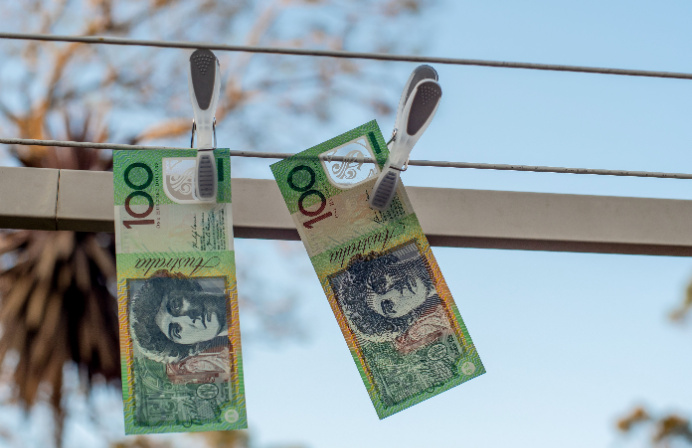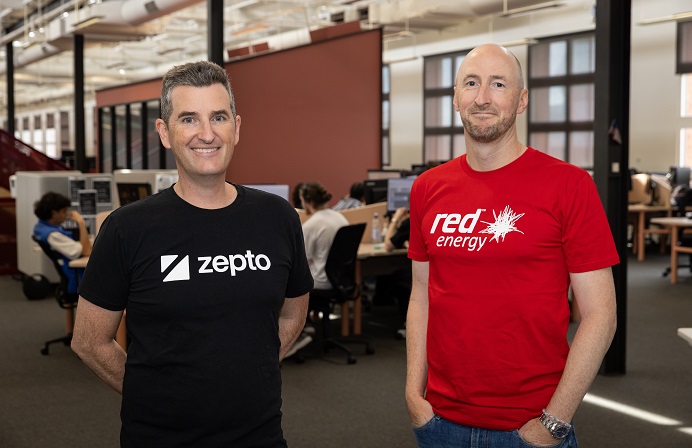
Australia’s big four banks – ANZ, CBA, NAB, and Westpac – remain, almost certainly, exposed to the majority of money laundering risk facing the country’s banking sector, “given the size of their customer base, scale of operations, cash transaction infrastructure and global reach”, according to AUSTRAC. However, improved anti-money laundering (AML) controls by the majors appear to be pushing money launderers on to smaller, less well-equipped institutions.
In its latest ML National Risk Assessment report, Australia’s chief financial intelligence and AML enforcement agency noted that the major banks will continue to pose a high money laundering vulnerability over the next three years, “given their importance in the financial services industry and connectivity with the global financial system”.
“Major banks have the most extensive and accessible cash transaction infrastructure in Australia. They facilitate more cash transactions than all other regulated sectors combined. This results in extreme exposure to cash-based money laundering methodologies,” AUSTRAC wrote.
The big four banks – which collectively facilitated around $4 trillion worth of international funds transfers in 2022 – were also recognised as a key conduit for international transactions into and out of Australia. Serving as correspondent banks for other financial institutions, they also increase their risk of ML exposure, AUSTRAC noted.
“These links to offshore institutions and customers expose them to a high level of foreign jurisdiction risk.”
Challenger banks, despite their primarily retail focus, were also singled out as high-risk vectors for money laundering operatives. However, AUSTRAC noted that this risk is largely proportional to an institution’s size, the types and location of customers it services, the products and services they offer, and their global reach.
Banks that operate branchless models and rely on third-party agents to facilitate cash transactions are, according to AUSTRAC, also exposed to heightened vulnerability. “These arrangements lengthen the product delivery chain and can complicate detection of suspicious persons or transactions,” the agency said.
Improved AML controls deployed by Australia’s big four banks, which have accelerated the closure of accounts suspected of being involved in ML activity, are also likely to be “displacing” higher-risk customers to domestic and foreign subsidiary banks (those that may have less sophisticated AML controls at hand).
“Larger entities in this [non-major bank] subsector may be particularly attractive because they offer similar products, services and the same delivery channel as major banks,” the report read.
Further, foreign subsidiary banks offering products like foreign currency exchange accounts are also at heightened ML risk, being generally more exposed to foreign jurisdiction risk.
“They are also likely favoured by customers with links to offshore entities,” AUSTRAC wrote.
The non-major banking subsector will, as a result, likely remain attractive to customers seeking to operate with ostensibly fewer controls on their activity.
Among the more common money laundering methods observed in the non-major bank subsector include the use of money mules, significant cash or cheque deposits and large domestic transfers into personal and business accounts, with funds often then transferred to other domestic or international financial institutions.
Mutual banks are assessed by AUSTRAC as posing a “medium and stable money laundering risk”, being “moderated by the subsector’s limited size and reach compared to other banking subsectors”.
Transaction accounts a key vulnerability
Transaction accounts are key transit points in and out of the banking system, making them the most commonly and persistently misused product, AUSTRAC said.
“They are highly exposed to cash placement, enable fast layering activity domestically and internationally and provide accessible, low-cost funds storage.
“Accounts can be established quickly and easily online, a feature exploited by criminals using stolen, rented or purchased identities to create mule accounts to launder money.
Other common retail banking products and services misused for money laundering include electronic funds transfers and credit or debit cards.
“These products are readily accessible, cheap and easy to use, highly exposed to cash transactions and can facilitate the movement of funds/value domestically and across borders.
AUSTRAC noted the use of varied and sometimes sophisticated methods to launder funds through banks, including the use of money mule networks, cuckoo smurfing, accounts owned by shell companies or cash-intensive businesses, and using bank products to store funds used for offsetting.
“Sophisticated money launderers often combine methods and use the expertise of professional service providers to help conceal their illicit activity.”
Despite heavy investments in their AML/CTF capabilities, including transaction monitoring systems, Australia’s big four banks also report more suspicious transactions than any other sector, AUSTRAC wrote.
This has the upside, however, of providing significant volumes of financial intelligence to law enforcement and intelligence bodies.
The Australian Institute of Criminology estimates that serious and organised crime costs Australians up to $60.1 billion.
The Federal Government has this year moved to extend AML rules and “address significant regulatory gaps”, with a proposal to bring Tranche-2 entities, including lawyers, accountants, trust and company service providers, real estate agents, and dealers in precious metals and stone, under the same AML laws as other financial services institutions. As well, the laws will also be extended to cover digital currencies.
The proposed changes would also simplify the existing legislation by requiring reporting entities to have a single AML and CTF program, rather than two, and include specific requirements to assess the risk of money laundering and terrorist financing.





